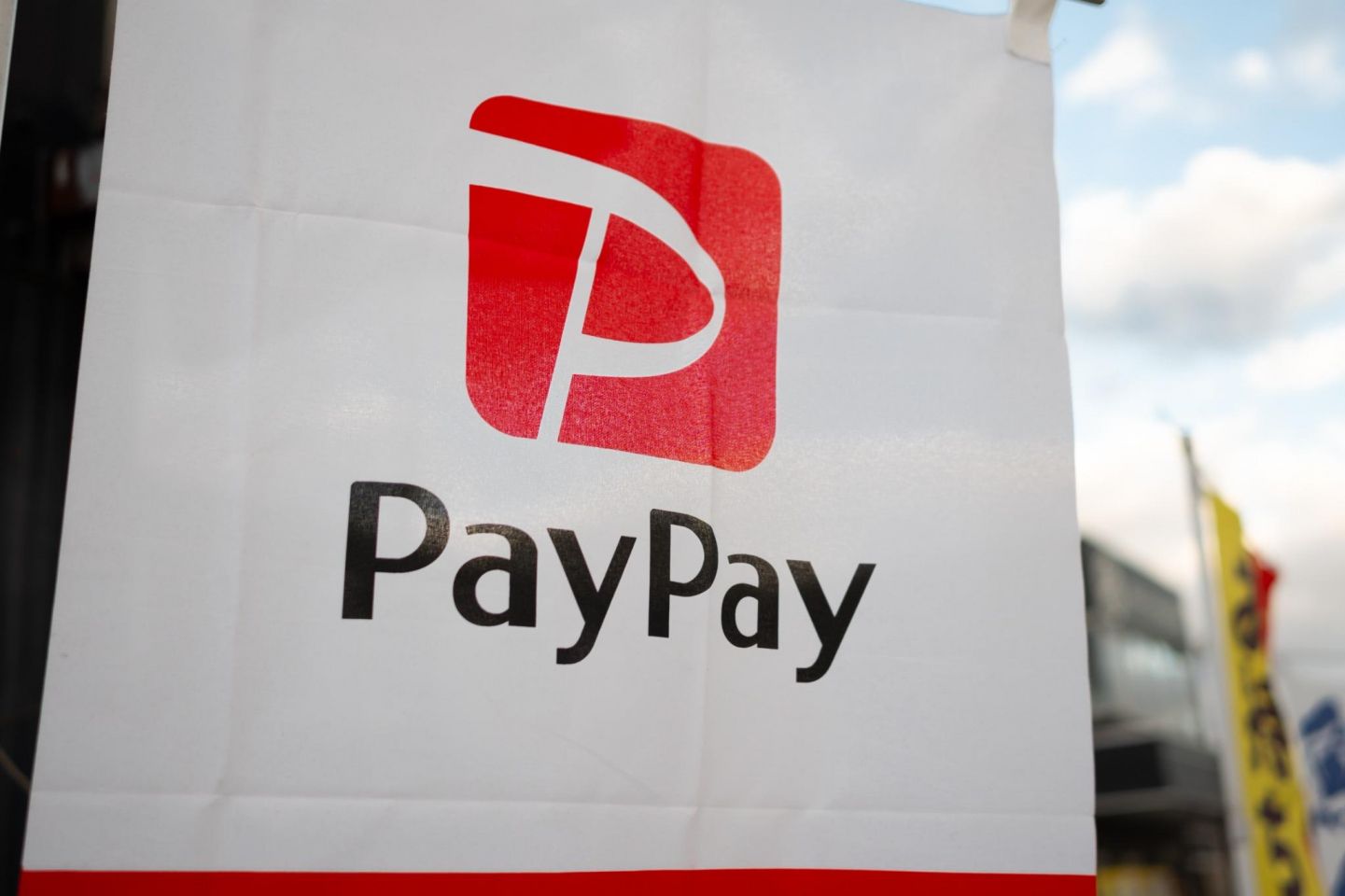PayPay IPO: how to trade PayPay share CFDs

IPO stocks are often highly volatile, and early trading can involve rapid price swings and significant risk.
Create an account Open a demo account
When is the PayPay IPO date?
There is no official PayPay IPO date as of 20 October 2025, but Japan’s largest mobile-payments provider is preparing for an initial public offering in the US, according to multiple reports from Reuters, Nikkei Asia and the Financial Times. The filing process has begun, but no official prospectus has been published yet, meaning the final pricing terms, share count, and structure are still not disclosed.
PayPay is reportedly targeting a December 2025 debut, depending on market conditions (source: Reuters). The same report suggests that the listing could value the company at $20bn or higher, potentially making it one of the largest Japanese tech IPOs in recent years.
Underwriters and structure
According to Reuters, SoftBank Group Corp., PayPay’s majority shareholder, has appointed Goldman Sachs, JPMorgan, Morgan Stanley, and Mizuho Financial Group as lead underwriters. Legal and accounting advisers are not disclosed.
The company is expected to issue American Depositary Shares (ADS) to trade in New York, while the primary shares will remain listed in Japan post-IPO – a structure similar to other Japanese firms seeking access to deeper US capital markets.
Expected valuation and proceeds
PayPay has not announced how many shares it plans to sell or the total funds to be raised. Reuters reports internal expectations of a valuation exceeding ¥3tn (≈ US $20bn).
Market environment
The PayPay listing comes amid a revival in the global IPO market after two years of muted activity. Fintech valuations have rebounded as interest rates stabilise and investors return to profitable, high-growth payment businesses.
For SoftBank, which has faced pressure to monetise holdings after the Arm Holdings float, the PayPay IPO would unlock liquidity and highlight its fintech portfolio’s value.
Why IPO now?
The listing will:
- Provide liquidity for SoftBank Group and its affiliates.
- Enhance PayPay’s access to global capital as it expands into broader fintech services.
- Increase brand visibility outside Japan ahead of potential regional expansion.
- Allow PayPay to issue equity incentives for talent retention and acquisitions.
The company’s growth trajectory and strong domestic market position give SoftBank an opportunity to crystallise value at a time when digital payments remain a high-growth sector.
What is PayPay?
PayPay Corporation operates Japan’s leading QR-code-based digital-payments platform. It enables consumers to pay merchants, transfer funds peer-to-peer, and access financial products through a single mobile app.
Launched in October 2018 as a joint venture between SoftBank and Yahoo Japan (now LY Corporation), PayPay quickly became one of the most widely used fintech apps in Japan.
Scale and user base
By mid-2025, PayPay reported over 70m registered users and over 4m participating merchants. The service processes billions of transactions annually across retail, dining, transport, and utilities.
PayPay’s strategy has been to create an ecosystem of financial services, moving from pure payments into banking, credit, investments, and insurance through affiliated SoftBank companies. Its users can now open deposit accounts, apply for loans, and invest in securities directly within the app interface.
PayPay’s ownership and structure
PayPay is a subsidiary of SoftBank Group Corp., which holds the majority of shares through its domestic telecom arm SoftBank Corp. LY Corporation (the merged entity of Yahoo Japan and Line) retains a minority stake.
SoftBank announced in its FY 2024 earnings that PayPay had become one of its most valuable unlisted holdings. After the IPO, PayPay is expected to remain a consolidated subsidiary, meaning SoftBank will continue to control operations.
Partnerships and strategic investments
In October 2025, Reuters reported that PayPay agreed to acquire a 40% stake in Binance Japan, marking its entry into the digital-asset sector. The partnership is intended to blend PayPay’s consumer payments base with Binance’s blockchain technology and compliance infrastructure.
This investment adds a new growth vector but also introduces regulatory complexity, as cryptocurrency oversight tightens in Japan and abroad.
How does PayPay make money?
The company has not yet released audited financials for the IPO, so detailed revenue and profit figures are not disclosed. However, its core business model is well known.
| Revenue stream | Description |
|---|---|
| Merchant fees | Commissions charged to merchants for processing transactions on the PayPay network. |
| Financial-service products | Income from loans, investments, and insurance offered through affiliated SoftBank and LY Group entities. |
| Advertising and marketing | PayPay partners with retailers for in-app promotions, loyalty programmes, and sponsored cashback campaigns. |
| Data analytics and APIs | Enterprise fees for using PayPay’s payment gateway and data-integration APIs. |
SoftBank’s last investor presentation (FY 2024) described PayPay as ‘approaching break-even on a consolidated basis’ after several years of heavy promotional spending. Independent analysts estimate annual transaction value exceeding ¥12tn (≈ US $80bn), though these numbers are not confirmed in IPO filings.
What might influence the PayPay stock price?
When PayPay lists, investors will focus on a combination of growth, profitability, and competitive risks.
Revenue growth and user monetisation
PayPay’s revenue performance depends on converting its massive user base into paying customers for financial products. Growth in merchant fees, advertising revenue, and cross-selling of credit and investment services will be decisive.
High transaction volumes are beneficial only if monetisation rates continue to rise. Investors will seek transparent disclosures on take-rate (the percentage of payment volume captured as revenue) and average revenue per active user, neither of which has yet been published.
Competitive dynamics
Japan’s payments landscape features rivals such as Rakuten Pay, d Barai (NTT Docomo), and au PAY (KDDI). Price wars or reduced merchant fees could erode PayPay’s margins. Its scale offers protection, but continued innovation will be needed to defend market share.
International expansion prospects
PayPay has hinted at overseas ambitions through SoftBank’s global network. Markets in Southeast Asia, where QR payments are common, could represent natural expansion paths. Investors will evaluate whether PayPay can replicate its domestic success abroad.
Regulation and compliance
Japan’s Financial Services Agency (FSA) has tightened oversight of payment and crypto activities. The company’s 40% stake in Binance Japan increases its exposure to evolving digital-asset rules. Any adverse regulatory developments could affect growth expectations.
Parent-company influence
SoftBank will remain PayPay’s controlling shareholder. Investors will consider governance, related-party transactions, and whether SoftBank might eventually reduce its stake. Confidence in SoftBank’s overall strategy will indirectly influence PayPay’s valuation.
Broader market sentiment
PayPay’s IPO follows a string of high-profile Japanese tech listings. Market appetite for large-cap fintech names will depend on US interest-rate trends and the performance of peers such as PayPal, Block (Square), and Adyen.
If macro conditions remain supportive, the debut could attract significant institutional participation from Asia-focused funds.
You can keep your finger on the pulse of the markets with expert insight from our in-house analysts. Check out our news and analysis section for more.
How to trade PayPay shares via CFDs
As and when the PayPay launch date happens, trading its shares via contracts for difference (CFDs) allows you to speculate on its price movements – without owning the underlying stock.
How to get started
- Step 1: Choose a platform Use a trusted broker like Capital.com, offering access to thousands of shares, indices and more.
- Step 2: Open an account Provide your personal details, verify your identity, complete a short suitability questionnaire, and set your trading preferences.
- Step 3: Add funds Deposit using card or bank transfer. Start small, and manage your risk carefully.
- Step 4: Track PayPay’s performance Use charts, technical indicators and price alerts to monitor the market and spot trading opportunities.
- Step 5: Go long or short with CFDs Think the price will rise? Go long. Expect a drop? Go short. Apply stop-loss* or take-profit levels to manage your trades.
IPOs can be volatile, especially in the early days of trading. CFDs give you the flexibility to act on price swings in either direction. However, CFDs are traded on margin. Leverage above 1:1 magnifies losses and gains, which amplifies risk. Always use risk-management tools and stay informed with expert insights available on the Capital.com platform and app.
*Standard stop-losses are not guaranteed. Guaranteed stop-losses incur a fee when activated.
Which fintech and payments stocks can I trade?
Until the PayPay listing date happens, investors can gain exposure to similar companies already trading publicly.
- PayPal Holdings (PYPL) – global online-payments leader with over 430 million active accounts.
- Block (SQ) – US-based fintech group providing Square merchant solutions and the Cash App platform.
- Adyen N.V. (ADYEY) – Dutch global payments processor serving enterprise clients.
- MercadoLibre (MELI) – Latin-American e-commerce and payments company operating Mercado Pago.
- Sea Limited (SE) – Southeast-Asian platform offering ShopeePay digital-wallet services.
These peers give traders exposure to the same macro themes driving PayPay’s valuation: digitisation, financial inclusion, and mobile-commerce adoption.
FAQs
Discover more upcoming IPOs
Stay informed on upcoming IPOs, market trends, and the newest trading opportunities

Agibot IPO
